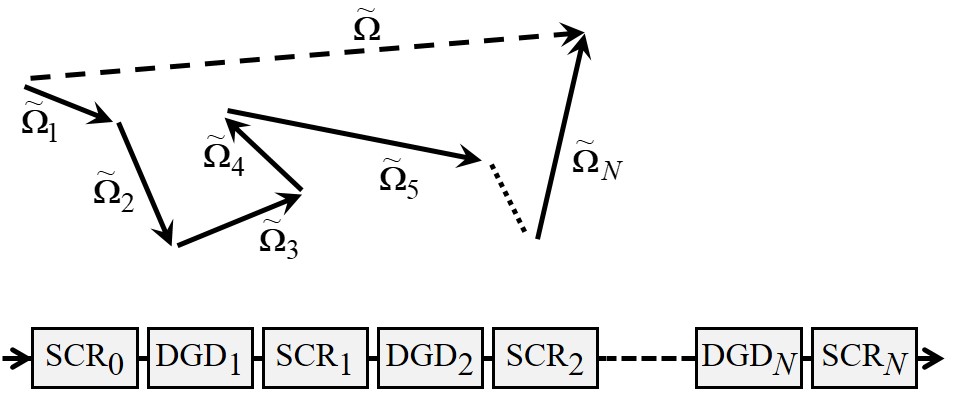PMDE1000 Polarization Mode Dispersion Emulator (Equalizer)
Key features
- N+1 polarization scrambler modules (boards) EPS1000 with speeds up to 20 Mrad/s (or 50 Mrad/s) and N differential group delay (DGD) sections are integrated into one case. (Standard: 1U 19" rackmount)
- Section DGDs can be switched.
- Typical configuration: 3 EPS1000, 2 DGD sections (switchable, e.g., 15 ps, 50 ps, ..., or external)
- Reasoning: See our contribution to PMD emulator standardization and underlying arguments in arXiv:1903.05248 [eess.SP].
- Applications: Polarization mode dispersion (PMD) emulator for coherent fiber links (400 Gb/s 80 km ZR, transoceanic links, Tb/s links, ...). PMD equalization (with user-supplied control signals).
- Fully programmable (USB, LAN, GUI, Matlab, Python, C, ...)
- We are eager to accommodate special requirements.
Physical model

Top: Exemplary differential group delay profile, with overall first-order PMD being equal to sum of individual DGD or PMD vectors. Bottom: PMD emulator with N DGD sections (indices 1...N) placed between N+1 retarders/scramblers SCR (indices 0...N)
Example: PMDE1000 with 3 EPS1000 and 2 switchable DGD sections
 Deutsch
Deutsch